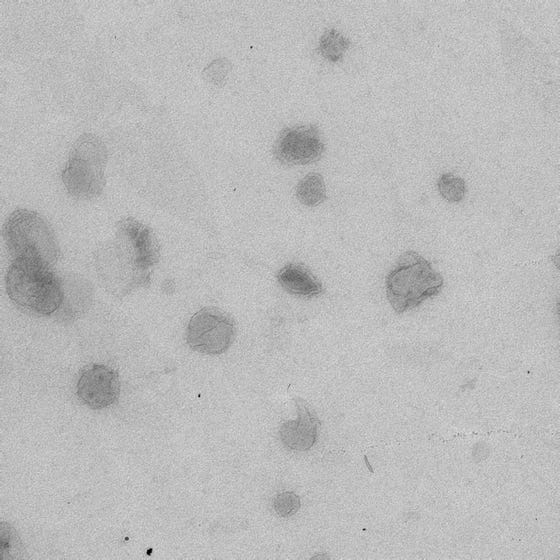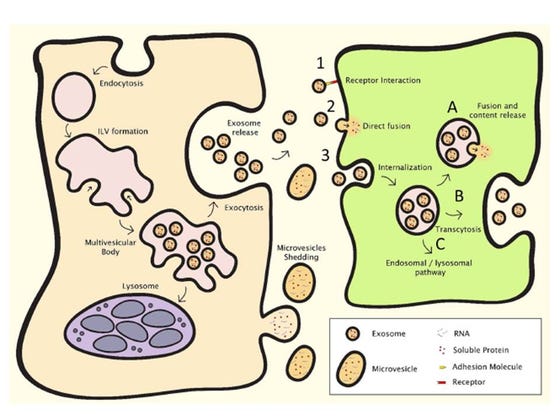Extracellular Vesicles
Extracellular vesicles are secreted by nearly all cells in the body, are found in all body fluids and are considered to be key components in cell-cell communication. EVs exert their effects on biological processes in a pleiotropic manner, directly activating cell surface receptors via protein and bioactive lipid ligands, merging their membrane contents into the recipient cell plasma membrane and delivering effectors including active proteins, small and large non-coding regulatory RNAs (e.g. microRNAs [miRNAs]) and mRNAs. Such wide ranging cell biological functions suggest that EVs, by virtue of their signaling ability, may have innate therapeutic potential, for example in the fields of regenerative medicine and immunotherapy.

Principle of extracellular vesicles (EV)-mediated intracellular communication. Components of donor cells are incorporated into EVs that contain proteins and RNA. EVs initiate signals through interaction between ligands on their surface and receptors on the recipient cell and/or have their contents taken up by recipient cells through endocytosis or fusion at the plasma membrane. These EV-driven delivery events have the potential to change the phenotype of recipient cells on a short- or long-term basis.

